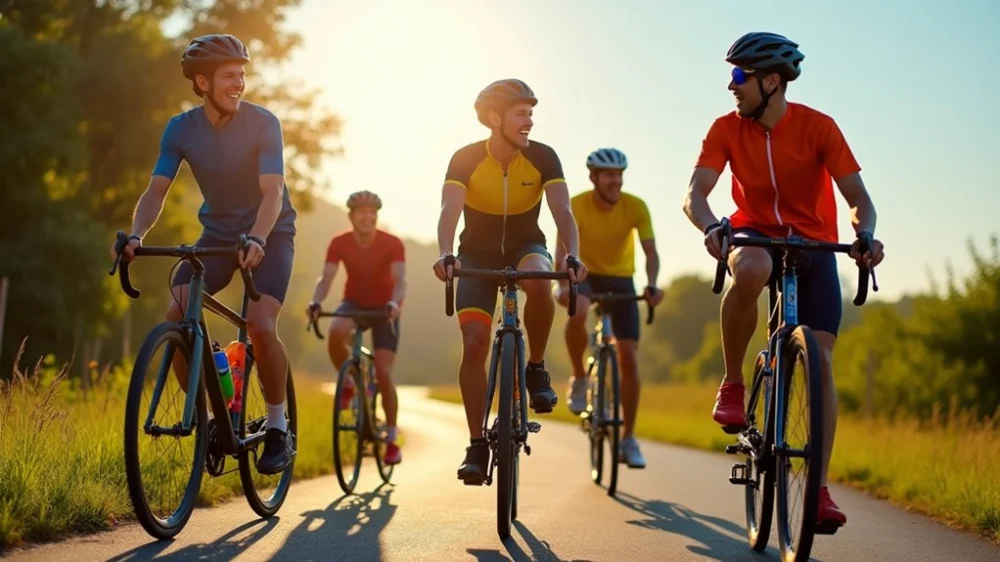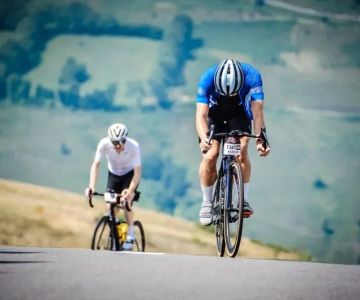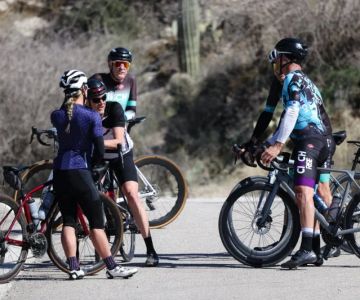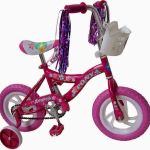
- 1-Understand-the-Group-Ride-Dynamics
- 2-Arrive-Prepared-and-Observant
- 3-Study-the-Group-Communication-Style
- 4-Position-Yourself-Smartly
- 5-Blend-Instead-of-Standing-Out
- 6-Know-Your-Limit-and-Speak-Up
- 7-Learn-from-Experienced-Riders
- 8-Respect-the-Ride-Etiquette
- 9-Adapt-to-Unspoken-Rules
- 10-Reflect-After-the-Ride
- 11-Find-Your-Riding-Community
1. Understand the Group Ride Dynamics
Riding with a group of strangers can be thrilling—or intimidating. Each group has its rhythm, hierarchy, and pace. Before joining, learn about the ride type (no-drop, tempo, or competitive) and its typical format. A rider from Denver once shared how he got dropped in the first 10 minutes because he assumed it was a social ride. Research or ask around to avoid surprises. Cycling Guider often features event reviews and community ratings to help you find rides that match your level.
2. Arrive Prepared and Observant
Punctuality is your first impression. Arrive early with a well-maintained bike, water, snacks, and any required tools. But don’t just jump in—observe. Watch how others greet, warm up, and position themselves. Are they relaxed or focused? Chatty or silent? This initial scan will help you adapt your tone and expectations. Being present without being intrusive sets the right tone with strangers.
3. Study the Group Communication Style
Hand signals, verbal cues, and body language are the grammar of group riding. Not every group uses the same signs for potholes, slowing, or turning. Some yell; others point. If you're unsure, ride in the back for the first few miles and learn silently. A woman from Austin once recounted how she accidentally caused a near-crash by misinterpreting a slowing gesture. Learning to read the group is like learning a dialect—it takes patience and attention.
4. Position Yourself Smartly
In a group, position matters for both safety and comfort. If you're new or unsure, ride mid-pack or at the back—not up front where leaders set pace. Avoid the tail-end if it’s a fast group, as it’s often more elastic and unpredictable. Smart positioning reduces the chance of getting dropped and helps you read the tempo without the pressure of leading.
5. Blend Instead of Standing Out
This is not the time to show off. Loud kits, erratic moves, or solo sprints send the wrong message. Strangers appreciate predictability and cohesion. A New York cyclist once said the best compliments come not from speed, but from how smoothly you integrate. Think like a team player, even if you’re just joining for a day. Cycling Guider offers gear suggestions that match both performance and group riding etiquette.
6. Know Your Limit and Speak Up
No shame in saying, “This pace is a bit too much for me.” Most experienced riders prefer honesty over overexertion that could compromise the group. If you're struggling, communicate clearly and safely fall back or break off. Many beginner riders hesitate to speak up, fearing judgment, only to end up in risky situations. Respect your own boundaries—you’ll earn more credibility than you think.
7. Learn from Experienced Riders
There’s wisdom in wheels. Veteran riders are usually happy to guide you—if you approach with respect and curiosity. After the ride, ask a question or say, “I noticed your cadence—how do you keep it so steady?” One rider from London shared how these short conversations led to mentorship, invitations to private rides, and even a cycling trip in the Alps. Start with a compliment, and let connections form naturally.
8. Respect the Ride Etiquette
Every group has its “code,” and breaking it—even unknowingly—can mark you as reckless. Don’t half-wheel, surge without warning, or overlap wheels. These are cardinal sins in group cycling. If you’re unsure, mimic the more seasoned riders. Online forums are filled with horror stories of group rides gone wrong because someone broke basic etiquette. Avoid becoming one of those stories.
9. Adapt to Unspoken Rules
Every ride develops its rhythm. Some riders rotate in a paceline, others draft quietly for miles. The flow may not be written down, but it's felt. Pay attention to when people take turns, pull off, or slow down. A subtle nod may be your invitation to rotate. Go with the grain, and soon enough, you’ll become part of that rhythm.
10. Reflect After the Ride
After the wheels stop spinning, don’t just pack up and leave. Take a moment to reflect. Did you learn something new? Did you adapt well, or did something feel off? Some of the best insights come right after a ride—when your muscles are tired but your mind is sharp. Share your experience on forums or with your riding group. Cycling Guider also welcomes user ride reports that help others grow from your story.
11. Find Your Riding Community
While you may start riding with strangers, you won’t stay strangers for long if you ride with heart and humility. Over time, these rides can turn into lasting friendships, training partnerships, or even a chosen family. If a group doesn’t click, try another—don’t let one awkward experience stop you. Use resources like Cycling Guider to discover local rides, community meetups, and gear recommendations that make every ride smoother and more connected.







 Billet BMX5.0 (2 reviews)
Billet BMX5.0 (2 reviews) Far East Children Bicycle Factory1.0 (1 reviews)
Far East Children Bicycle Factory1.0 (1 reviews) Archer Motorsports, Inc.4.0 (8 reviews)
Archer Motorsports, Inc.4.0 (8 reviews) YEP Bike Works4.0 (55 reviews)
YEP Bike Works4.0 (55 reviews) Gorham Bike & Ski4.0 (498 reviews)
Gorham Bike & Ski4.0 (498 reviews) Alchemy Bikes4.0 (37 reviews)
Alchemy Bikes4.0 (37 reviews) How to Teach Kids to Ride a Bike: A Step-by-Step Guide for Parents
How to Teach Kids to Ride a Bike: A Step-by-Step Guide for Parents Tips for Riding on Busy City Streets: Smart Strategies for Urban Cyclists
Tips for Riding on Busy City Streets: Smart Strategies for Urban Cyclists Best US National Parks for Mountain Biking: Ride Epic Trails Across America
Best US National Parks for Mountain Biking: Ride Epic Trails Across America Best Aero Helmets for Time Trials and Racing
Best Aero Helmets for Time Trials and Racing How to Clean and Lubricate Your Bike Chain Like a Pro
How to Clean and Lubricate Your Bike Chain Like a Pro 10 Must-Have Items for Long-Distance Cycling Trips
10 Must-Have Items for Long-Distance Cycling Trips